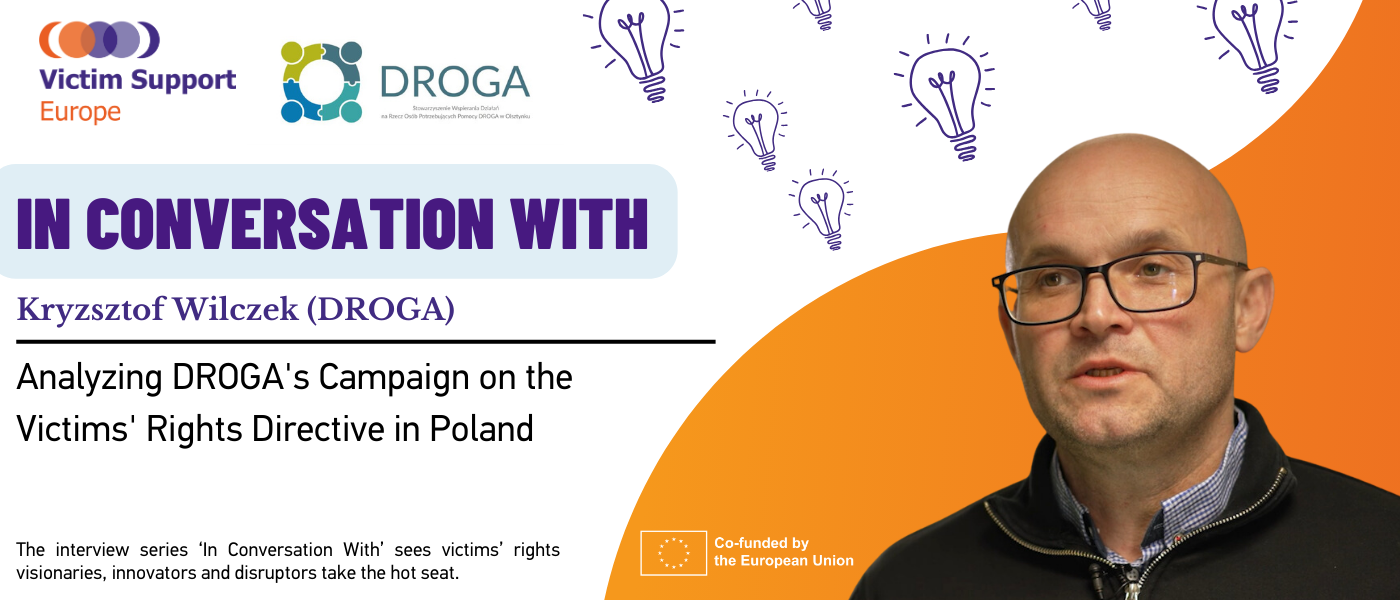
In this interview, we explore the impact of a recent campaign led by DROGA, a member of Victim Support Europe (VSE). The campaign, entitled “Stand up for the rights of crime victims. It’s time for change!”, aimed to raise awareness about the Victims’ Rights Directive in Poland. Below, we discuss the campaign’s objectives, methods, and results with Krzysztof Wilczek, DROGA’s President.
Marina Kazakova, VSE: Krzysztof, could you tell us DROGA’s main objectives and goals for the “Stand up for the rights of crime victims. It’s time for change!” campaign? What were you aiming to achieve in terms of popularizing the Victims’ Rights Directive in Poland?
Krzysztof Wilczek, DROGA: The main goal was to highlight the shortcomings of Polish legislation in the context of implementing the provisions of the Victims’ Rights Directive and its impact on the citizens’ lives, specifically the rights of certain types of crime victims.
Marina Kazakova, VSE: What evidence did the campaign use to demonstrate that people are unaware of gaps in knowledge on the Victims’ Rights Directive, and what facts indicated the need for a national Poland-wide campaign?
Krzysztof Wilczek, DROGA: The campaign used information from the Benevict project. Research showed that even specialists within Poland’s justice system and victim support institutions have limited knowledge about the Directive. This finding prompted further study , including an in-depth analysis of specialised press and empirical data, that allowed us to pinpoint the campaign’s goals and topics.
Marina Kazakova, VSE: How did the campaign plan to reach and engage with victims of crime as well as support institutions such as the police, health care providers, courts, prosecutor’s offices, and social welfare centers?
Krzysztof Wilczek, DROGA: We intended to present a selection of Directive requirements that have not yet been adopted in Poland and demonstrate their impact on the lives of ordinary citizens within three previously chosen areas: the protection of child victims of crime, the right to compensation, and access to support services. The campaign also included an in-depth analysis of legislative gaps that were presented in a short videos by a colleague who is both a professor of law and a specialist in criminal proceedings.
Marina Kazakova, VSE: Can you elaborate on the various campaign component: posters, leaflets, social media posts, and graphics, etc., and how they contributed to achieving the campaign’s objectives?
Krzysztof Wilczek, DROGA: A 4-minute film, 3 short videos, 5 posters, and various graphics were created. The film gave an overview of the historic and current Polish context, and information on the planned changes that are required to implement select provisions of the Directive and to fully adapt to the changing legal and social circumstances in our country. The individual videos, posters, and graphics, in turn, focused on selected thematic areas of the implementation, related to the protection of children’s rights, better access to support services, and the right to compensation.
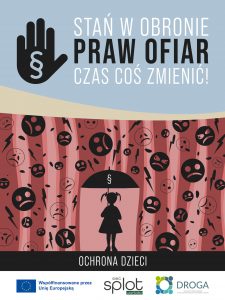
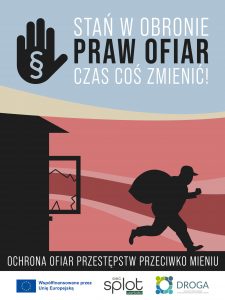
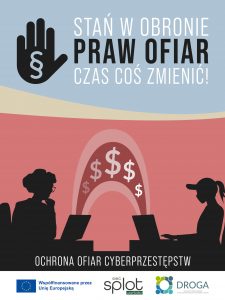
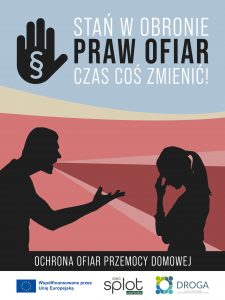
Marina Kazakova, VSE: The campaign features a 4-minute film addressing specific aspects of the Victims’ Rights Directive. Could you outline the structure of the film and its key messages?
Krzysztof Wilczek, DROGA: The purpose of the film was to introduce to a broader audience the topic of the Directive, which is complex in itself and requires, if not knowledge, then at least a general understanding and interest in such issues. The campaign carried out under the slogan “Time for Change. There is still much to be done for crime victims.” underscored the absence of several crucial provisions safeguarding crime victims’ rights, as indicated by our prior analysis and research. These encompass child protection, the right to compensation, and access to support services. Moreover, there appear to be no legal, social, or financial impediments to their full implementation. The film’s conclusion urges action and solicits support for amendments to the Directive, especially in light of the upcoming European Parliament elections.
Marina Kazakova, VSE: Victim Support Europe contributed a short video to support this cause. How does this contribution align with the goals of the campaign, and what role does it play in advocating for victims’ rights?
Krzysztof Wilczek, DROGA: The involvement of VSE was crucial in showcasing the broader European context and various areas of victim support, while the campaign aimed to focus on a selection of elements that are important from the perspective of Polish citizens.
Marina Kazakova, VSE: Now that the campaign has concluded, could you share its overall statistics with us?
Krzysztof Wilczek, DROGA: Of course, here they are:
- Reach: 129,167
- Reactions: 6,548
- Comments: 26
- Shares: 25
Overall, these figures demonstrate a relatively effective campaign, supported by an EU contribution of approximately €2,890 with considerable impact in the Polish context.
____
➡ See the campaign multimedia materials: https://stowarzyszeniedroga.com.pl/kampania-na-temat-dyrektywy-2012-29-ue/
➡ About DROGA (Association for Supporting Activities for Persons Needing Help)
Established in 2010, DROGA (ROAD) is an independent, project-driven organization funded by external and competitive commercial sources. It provides holistic support and therapeutic services to local community members and at-risk groups affected by addictions, alcoholism, and domestic violence. The association’s members includes psychologists, lawyers, therapists, academics, welfare workers, youth workers, social media officers, and managers. DROGA also runs awareness campaigns, publishes books, and offers training programs for practitioners such as police officers, healthcare representatives, teachers, local welfare center employees, and local elected officials. Additionally, the association conducts therapy sessions for perpetrators and survivors of crime based on the Duluth and Trauma-Informed Models.

